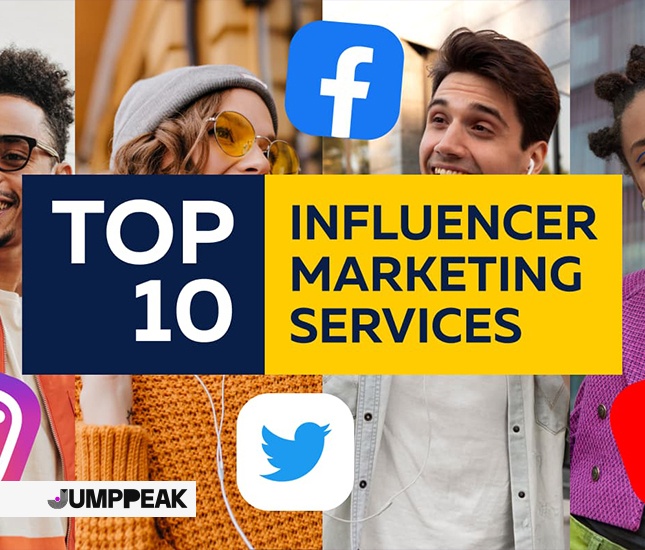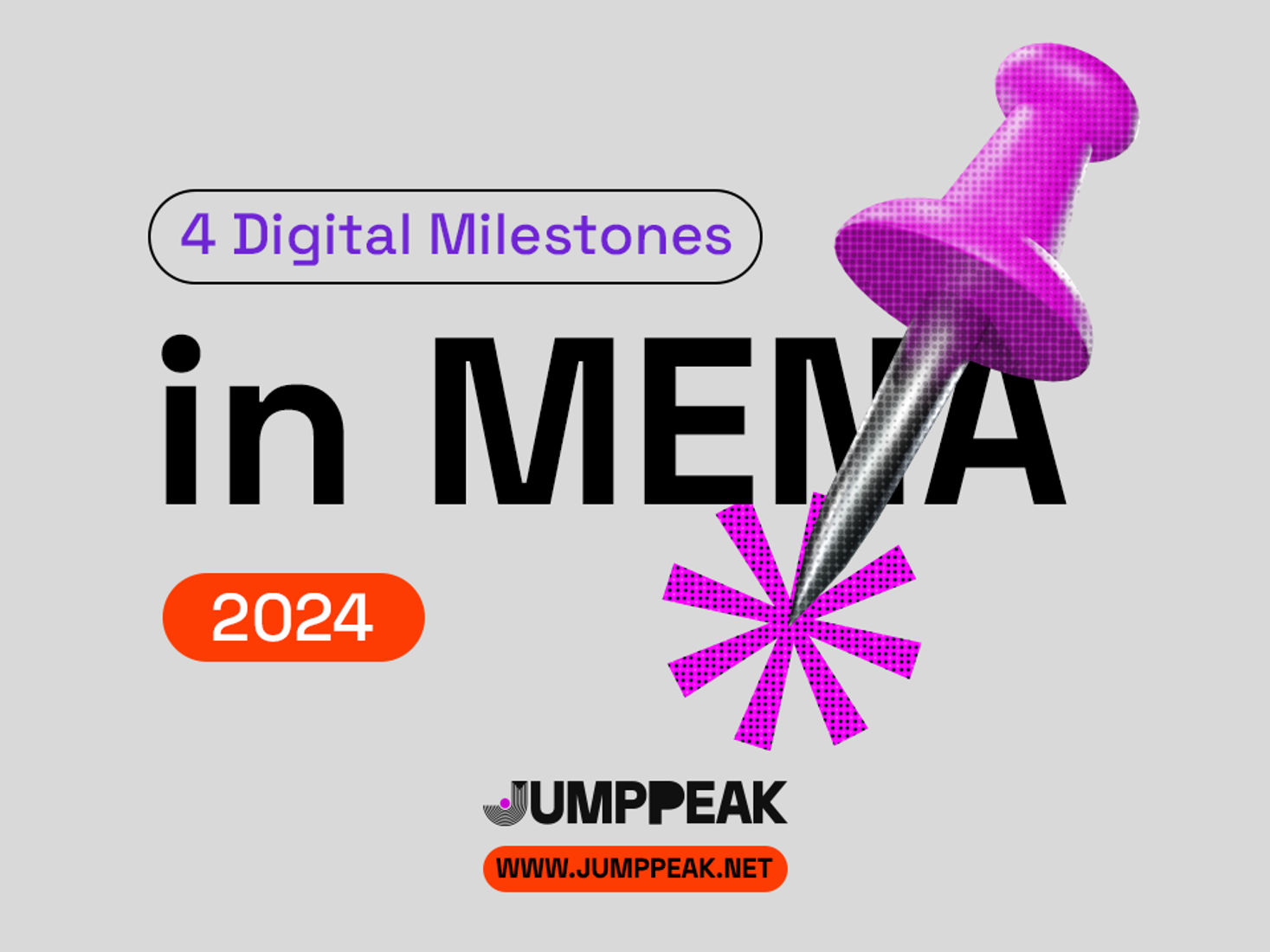Mastering B2B SEO in 2024: The Best 10 Strategies for Success!
Mastering B2B SEO in 2024: The Best 10 Strategies for Success!
Companies are increasingly recognizing the power of search engine optimization (SEO) for driving growth…a recent HubSpot study found that 61% of marketers prioritize improving their SEO and boosting their organic presence, and this focus on SEO is well-justified—businesses proficient in SEO enjoy a significant return on investment, with an average close rate of 14.6%, compared to just 1.7% for outbound methods like cold-calling. Clearly, investing in SEO is a smarter and more effective way to achieve success.
Moreover, a survey by Search Engine Journal found that 49% of marketers believe organic search has the best ROI of any marketing channel. As Bill Gates famously said, “Content is king.” …well, apparently this mantra remains true, but in 2024, it's not just about creating content; it’s about creating optimized, high-quality content that ranks well in search engines and addresses the specific needs of B2B buyers.
In this article, we're going to explore the essentials of B2B SEO. We'll cover the key points you need to know to plan the best strategy for 2024. So, get ready to take some notes – you don’t want to miss this!
This Article covers:
-
Understanding the B2B SEO Landscape in 2024
-
Keyword Research and Optimization
-
On-Page SEO Best Practices
-
Technical SEO Considerations
-
Link Building and Off-Page SEO
-
Local and International SEO
-
Utilizing Analytics and Data-Driven SEO
-
User Experience and Conversion Rate Optimization (CRO)
-
Adapting to Algorithm Changes and Updates
-
Case Studies and Success Stories
-
Understanding the B2B SEO Landscape in 2024
The B2B SEO landscape in 2024 is set to evolve rapidly, influenced by new B2B SEO trends 2024 and the growing importance of digital marketing. In a B2B vs B2C SEO comparison, the B2C is traditionally focusing on different buyer behaviors, while SEO in B2B marketing emphasizes personalized content and deeper buyer engagement.
A study by HubSpot highlights that 61% of marketers consider improving SEO and growing their organic presence as their top inbound marketing priority.
-
B2B SEO Trends in 2024
-
Integration of AI and Machine Learning
According to Statista, the AI market in the MENA region is estimated to be worth USD 1.414 billion, with significant growth observed in the B2B e-commerce sector. This typically entails:
-
Predictive Analytics- AI generative tools can be developed to predict future trends and user behavior, allowing businesses to stay ahead of the competition by adapting their SEO strategies proactively. According to a study by Gartner, AI applications in marketing are predicted to create $2.6 trillion in business value by 2024.
“Artificial intelligence is the new electricity,” says Andrew Ng, emphasizing the transformative impact of AI, especially in predictive analytics SEO.
-
Improved Technical SEO- AI can automate technical SEO tasks such as site audits, identifying and fixing crawl errors, and ensuring proper site indexing- making it easier to stay up to the bar of the technical standards as Google as it would like to go higher in its standards. Also, Machine learning can improve website architecture and internal linking strategies to enhance user experience and search engine visibility.
-
Enhanced Competitor Analysis- AI tools can analyze competitor websites, backlink profiles, and content strategies more effectively, providing insights into what is working for others in the industry.
What does this entail?...That it is better if you started already developing your own AI-generative tool, tailoring it to your target audience and services, to stay competitive and meet the evolving demands of the market- or else here are some of the well know AI generative tools in the B2B digital Marketing:
-
Voice Search Optimization
Your AI can help optimize content for voice queries, which are often more conversational and complex.
And so, understanding and leveraging natural language processing (NLP) is crucial for optimizing for voice search. Usually this requires more use of (Long-tail- Keywords) and strategically planning for it across your content copies.
"In the world of SEO, long-tail keywords are the compass guiding you to the treasure trove of untapped opportunities." - Neil Patel
Let’s use our company (JumpPeak-Top Digital Transformation in Egypt & KSA) in the following example:
-
Generic Keyword: “Digital Transformation Company”
-
Long-Tail Keyword: “ What is the top digital transformation company in Egypt & KSA?”
And Voilà...we are on the first page on Google search!
OTHER EXAMPLES:
-
Generic Keyword: "SEO"
-
Long-Tail Keyword: "Best SEO strategies for B2B startups"
Another example:
-
Generic Keyword: "Digital marketing"
-
Long-Tail Keyword: "How to create an effective digital marketing plan for Medical Centers in Saudi Arabia?"
DID YOU KNOW?- 50% of online searches occur via voice search in the MENA region!
-
Local SEO for B2B
Even if your B2B company operates nationally or globally, don't overlook the power of your local SEO, it is one of B2B SEO trends for this year and it's especially useful when you're aiming to target specific geographic markets or regions.
Example- if you’re an engineering consulting firm based in Egypt but also want to attract clients in Saudi Arabia, local SEO can help you appear in search results for businesses looking for engineering consultants in Riyadh or Jeddah. This targeted approach ensures your business stands out in the local market, even if your reach is much broader.
-
Featured Snippets and Zero-Click Searches
B2B SEO efforts increasingly target featured snippets and other SERP features that provide direct answers to user queries. Optimizing content to appear in these snippets can drive organic traffic and establish industry authority.
Zero-click searches occur when users find the information they need directly on the search results page without having to click through to a website. These often involve featured snippets, knowledge panels, and other rich results provided by search engines like Google.
Examples of Zero-Click Searches:
Featured Snippets: Direct answers to queries shown at the top of search results.
Knowledge Panels: Information boxes that appear on the right-hand side of search results for specific entities.
Local Packs: Maps and business listings that appear for location-based queries.
Definitions: Quick definitions shown directly in the search results.
So let’s say for example, you run a cybersecurity firm and optimize your content to answer specific questions like "What are the top cybersecurity threats in 2024?" your answer might be featured at the top of the search results. This not only brings more traffic to your site but also builds your credibility as an expert in cybersecurity.
-
Rise of Visual and Interactive Content
Imagine you are enabled to interact with a product before you buy it. For B2B companies, leveraging visual and interactive content can transform the customer experience, which boosts this feature to the top trends for B2B SEO in 2024.
Interactive content is twice as likely to engage a viewer as static content- according to Forbes- so let’s say you run a B2B manufacturing company, and you introduce an interactive product configurator on your website. It's a game-changer. Your customers can customize products on-the-fly, adjusting colors, sizes, and features in real-time. And get this – they instantly see how each tweak shapes their final product. No more guesswork! Plus, they receive instant quotes tailored to their selections, simplifying the entire ordering process. Who wouldn't be drawn to such an immersive experience? …I know I would!
-
Semantic Search Optimization:
Seth Godin- a marketer- said once, "Content marketing is the only marketing left." It's so true, especially in today's tech savvy world we are living nowadays, that is changing faster than the speed of light, search engines especially the almighty Google, are getting smarter by the day cause they are not just reading the words we type anymore, they understand what we really want!
According to a study by Moz, 70-80% of search engine users ignore paid ads and focus on organic results.
Now's your chance to take the lead. Dive into the game and make your mark by using semantic markup. Organize your data in a way that grabs search engines' attention and keeps them hooked. Don't let your content get lost in the vast sea of information out there!
Now that we've covered the top B2B SEO trends for 2024, let's dive into crafting the ultimate B2B SEO strategy for the year. Ready to elevate your game? …Let's get started!
2. Keyword Research and Optimization
Our focus on the first strategy will go for the most known one of SEO, which is (Keyword Research and Optimization), for your Effective B2B keyword research, it must involve identifying high-value B2B keywords that resonate with specific industries and target audiences.
>>>Using long-tail keywords B2B helps you capture niche markets keywords and improve search rankings.
>>>Conducting competitor keyword analysis helps in creating winning strategies.
An insightful report from Ahrefs found that 92% of all keywords get ten searches or less per month, underscoring the importance of targeting the right phrases.
Now, lets demonstrate how to conduct keyword optimization step-by-step:
1. Start with a Seed List
Kick off with a basic list of relevant terms that probably your audience will be searching for… For example, if you run a digital marketing agency, you might start with:
-
"digital marketing,"
-
"SEO services," or
-
"content marketing."
2. Expand with Tools
You may need to use keyword research tools like Google Keyword Planner, SEMrush, or Ahrefs to expand your list, as these tools give you related keywords, search volumes, and difficulty scores.
3. Analyze Competitors
Check out what your competitors are ranking for...tools like Ahrefs let you see the top keywords driving traffic to their sites. If a competitor is ranking high for "digital marketing strategies," it’s a keyword worth considering.
4. Focus on Long-Tail Keywords
As specified earlier, Long-tail keywords are your friends. They’re more specific and less competitive. So, Instead of just "SEO," try "best SEO practices for small businesses in 2024." These terms often have higher conversion rates because they match user intent more closely.
5. Consider User Intent
Understand what users are actually looking for…so, your target keyword shall be tailored to the intent of the users, it is different if they are seeking information or looking to buy some stuff or maybe comparing options.
For example "how to improve website SEO" caters to users looking for guidance.
6. Optimize Your Content
Once you have your keywords, weave them naturally into your content, and focus on:
-
Titles and Headings: Make sure your main keywords are in your H1, H2, and H3 tags.
-
Meta Descriptions: Craft compelling meta descriptions with your keywords to improve click-through rates.
-
Body Text: Incorporate keywords naturally without overstuffing. Aim for readability and value.
7. Monitor and Adjust
SEO is not a set-it-and-forget-it game. Use tools like Google Analytics and Search Console to monitor your rankings and traffic, so if a strategy is not working with you as planned, you can always tweak and adjust as you go..maybe try a new long-tail keyword or update your content.
3. On-Page SEO Best Practices
B2B content optimization is crucial for achieving higher rankings and better engagement. Incorporating meta tags B2B and utilizing B2B structured data enhance the search engine visibility of your pages.
Moz’s study indicates that headers optimization and SEO-friendly URLs significantly improve click-through rates.
4. Technical SEO Considerations
A study by SEMrush found that 70% of respondents consider technical SEO a significant part of their strategy.
So, Let’s get you ahead of the game with these steps to consider in your technical SEO strategy:
1- Mobile SEO B2B:Get Mobile-Friendly
Your website needs to ace mobile-friendliness for smooth browsing on smartphones and tablets. If it’s not optimized, users might bounce off, which could hurt your search rankings.
Why It Matters?
Being mobile-friendly isn’t just about user experience; it affects where you show up in search results too. Research says 8 out of 10 top-ranking sites are mobile-friendly. A mobile-optimized site keeps visitors around longer, boosting engagement and conversion rates.
How to Do It?
Go Responsive: Use a design that adjusts to fit any screen size.
Speed Up: Optimize images and reduce redirects for faster loading.
Touch-Friendly: Make buttons easy to tap, and space elements for fewer accidental clicks.
Viewport Setup: Use meta tags to ensure your content fits the screen on mobile browsers.
2- Site speed optimization
Fast-loading websites keep users happy and boost SEO. Google says pages should load within 3 seconds, ideally 2 for e-commerce. Slow sites mean high bounce rates and low rankings.
How to Speed Up
Optimize Images: Compress images without losing quality.
Use Compression: Reduce file sizes with tools like Gzip.
Minimize Code: Clean up CSS, JavaScript, and HTML for faster loading.
Browser Caching: Store files locally to speed up returning visits.
Fix Server Issues: Identify and fix slow server problems.
Content Delivery Network (CDN): Use CDNs to distribute content for faster loading.
Tools for Speed Testing:
3- Secure Website Architecture
A secure and well-structured website is fundamental. Implement HTTPS to protect your users' data and build trust, and ensure your site’s architecture is organized to facilitate easy crawling and indexing by search engines.
How to Implement HTTPS?
-
Get an SSL Certificate
-
Follow your hosting provider’s instructions.
-
Make sure all links use HTTPS.
-
Use tools like SSL Labs’ SSL Test, to test your setup
4- User Experience SEO
Key Aspects to Optimize
-
Page Load Time
-
Navigation
-
Content Readability
-
Mobile Responsiveness
-
Interactivity and Visual Appeal
5- Secure Website Architecture
Best Practices
-
Simplify Navigation: Make it easy to find content.
-
SEO-Friendly URLs: Use descriptive URLs with hyphens.
-
Breadcrumb Navigation: Helps users navigate and aids search engines.
-
Logical Hierarchy: Organize content logically for easier navigation.
5. Link Building and Off-Page SEO
Building high-quality backlinks B2B from reputable sources is a cornerstone of B2B SEO…techniques such as guest blogging B2B and influencer collaboration SEO can significantly enhance your site’s authority.
“Link building is sweat plus creativity,” says Matt Cutts, reflecting the effort and strategy involved in online PR SEO and social media SEO.
6. Local and International SEO
Research suggests that for 70% of brands, SEO outperforms PPC ads in driving sales. So, consider the following key-factors whenever planning to expand:
1- Local SEO B2B- Focus on optimizing your online presence to target businesses within a specific geographic area. Utilize local keywords and claim your Google My Business listing to enhance visibility in local search results.
2- International SEO B2B: Expand your reach to a global audience by implementing international SEO strategies. Tailor your content and keywords to resonate with diverse cultural and linguistic preferences across different countries and regions.
3- Business Location Optimization: Ensure consistency and visibility of your business's physical locations across various online platforms. Maintain accurate information on platforms like Google Maps and Yelp to enhance local search rankings.
4- Multinational SEO Strategies: Develop comprehensive strategies to optimize your website for search engines across multiple countries. Consider factors such as language variations and regional preferences when crafting content and marketing campaigns.
5- Multilingual SEO: Translate your website content into different languages to cater to multilingual audiences. Implement multilingual SEO techniques and use hreflang tags to signal to search engines which language version to display to users based on their language settings.
Also, for B2B enterprises eyeing global expansion, robust international SEO strategies are key. Here's how to nail it:
-
Keyword Research: Tailor your keyword research to each target market.
-
Website Localization: Translate and adapt your content for global audiences.
-
International SEO Tools: Leverage tools like Google Search Console.
-
Hreflang Tags: Implement hreflang tags to specify language and geographic targeting.
-
International Link Building: Build high-quality backlinks from authoritative websites.
-
Cultural Sensitivity: Design your website and content with cultural nuances in mind.
Combining Local and International SEO
For businesses operating locally and internationally, a hybrid approach combining both strategies can yield optimal results. Here's how:
-
Multi-Layered Website: Create a main website with subpages tailored to different regions.
-
Location Detection: Use technology to detect users' locations and serve them relevant content.
-
PPC Advertising: Supplement SEO efforts with targeted PPC campaigns.
7. Utilizing Analytics and Data-Driven SEO
In the age of big data, B2B SEO metrics are indispensable for measuring success and refining strategies. Tools like Google Analytics provide critical insights into performance, allowing for data-driven SEO adjustments. A report by Forrester shows that businesses leveraging data-driven insights are six times more likely to retain customers.
W. Edwards Deming once said, encapsulating the importance of SEO analytics tools and SEO reporting tools:
8. Conversion Rate Optimization (CRO)
Enhancing user experience (UX) and conversion rate optimization (CRO) is integral to a successful SEO strategy. Implementing A/B testing SEO and incorporating user feedback SEO can significantly boost engagement and conversions. A study by HubSpot found that businesses see a 55% increase in leads after increasing their UX investments.
9. Adapting to Algorithm Changes and Updates
Staying updated with search algorithm changes 2024 is crucial for maintaining and improving rankings. Developing algorithm resilience SEO and following SEO best practices 2024 can future-proof your strategies. According to Search Engine Journal, Google makes over 3,000 algorithm changes a year. “Adapt or perish, now as ever, is nature's inexorable imperative,” said H.G. Wells, reflecting the need to stay agile and responsive in the ever-changing SEO environment.
10. Case Studies and Success Stories
Analyzing successful B2B SEO campaigns provides practical insights and inspiration. Also, SEO Case studies B2B often reveal the importance of a well-rounded strategy, from keyword research to content marketing…you can easily get actionable SEO insights!
“The success of the young entrepreneur will be the key to India's transformation in the new millennium,” said Dhirubhai Ambani, emphasizing the importance of innovation, learning B2B SEO lessons, and getting inspired by industry SEO leaders.














